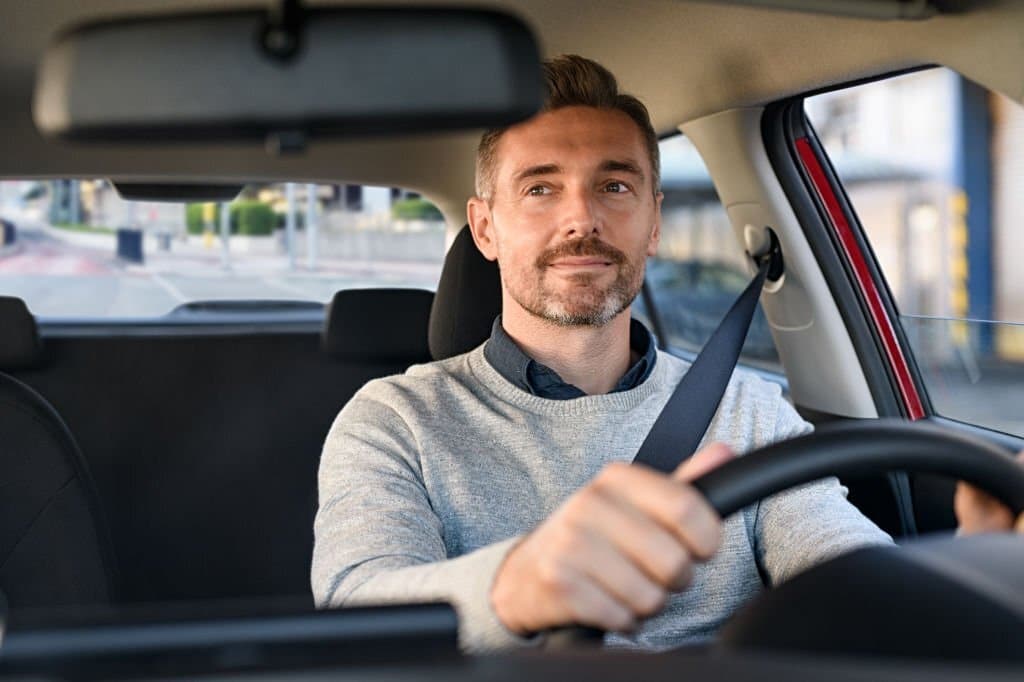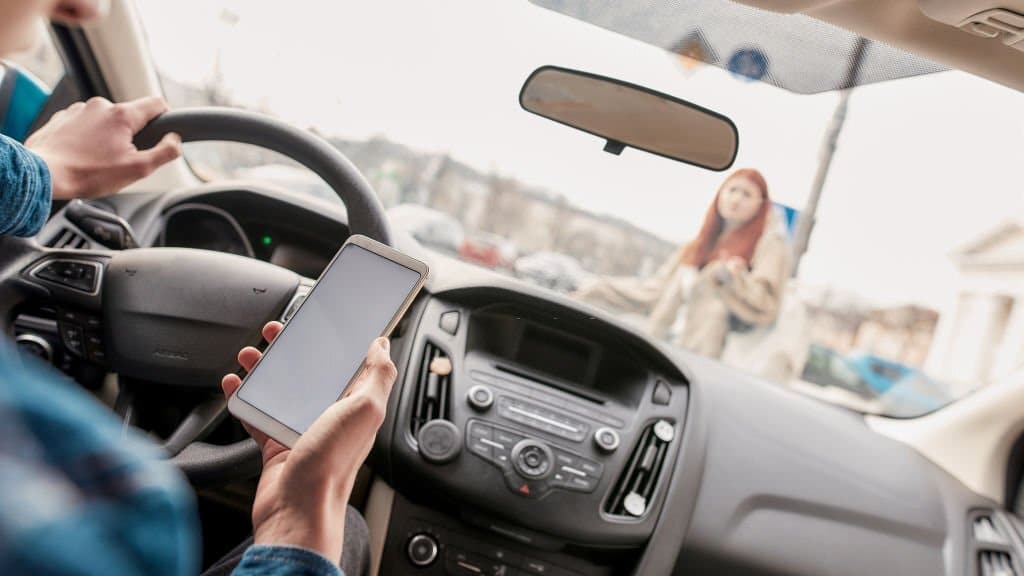Driving at a slower speed is often associated with negative stereotypes, such as being a bad driver or being overly cautious. However, slow driving can have many benefits for drivers and other road users. In this article, we will explore the advantages of slow driving. Safety tips for driving at a slower speed, and common questions about this practice.
Understanding the Different Types of Slow Drivers and Why They Can Be Dangerous

Driving too slowly is just as dangerous as driving too fast. It can disrupt the flow of traffic and increase the likelihood of accidents. Slow drivers may cause frustration among other drivers, who might need to take sudden evasive action to avoid collisions. There are various reasons why people drive slowly, and in this article, we will explore some of them.
Distracted Drivers: A Major Cause of Slow Driving and Accidents

Distracted driving is a leading cause of accidents on the road. Over one-third of traffic, fatalities are attributed to distracted drivers each year. These drivers may not even realize that they are driving too slowly, placing themselves and others at risk. Eating, using a navigation system, or texting while driving can take a driver’s attention away from the road, leading to them slowing down and interrupting the flow of traffic. Drivers may need to react quickly to avoid a distracted driver, increasing the likelihood of accidents. Drivers must be alert and avoid engaging in any activity that may take their attention away from the road.
New Drivers: Slow and Unsteady on the Road

New drivers are often nervous when first navigating traffic. They may feel safer by driving too slowly. Not realizing that they are creating a dangerous situation for themselves and other drivers. Driving too slowly while merging onto a highway or freeway can cause other drivers to slow down suddenly, increasing the likelihood of rear-end accidents. It is essential for drivers to be patient and alert when driving near new drivers and avoid getting too close or becoming aggressive.
Senior Citizens: Cautious Drivers with Increased Risk
Senior citizens may experience physical limitations, such as poor vision or sore joints, that can slow them down on the road. Aging can also affect their reaction time, leading them to drive more cautiously. However, this can create an unsafe driving environment if they drive too far below the speed limit or make sudden stops. It is crucial for other drivers to be patient and understanding when driving near senior citizens, and give them enough space and time to maneuver.
Rubberneckers: The Danger of Tourists and Curious Drivers
Rubberneckers are drivers who slow down unexpectedly to observe roadside attractions, such as accidents, landmarks, or tourist spots. This behavior can lead to traffic congestion, making it dangerous for other drivers. Those who live in tourist destinations or near famous landmarks should expect to encounter slow drivers and drive defensively. Drivers should also avoid slowing down to look at accidents, as it can cause dangerous situations for themselves and others around them. The key is to stay alert and focused on the road, avoiding any unnecessary distractions that may lead to an accident.
Conclusion | Understanding the Different Types of Slow Drivers and Why They Can Be Dangerous
In conclusion, slow drivers can pose significant risks on the road, causing frustration, confusion, and even accidents. Understanding the various types of slow drivers and their motivations can help drivers be more proactive and patient on the road. Distracted, new, senior, and rubbernecking drivers all require different approaches, from honking or flashing lights to being patient and avoiding dangerous maneuvers. By being alert and defensive, drivers can prevent accidents and maintain a safe driving environment for themselves and others. Ultimately, being a responsible and conscientious driver is key to navigating the challenges of sharing the road with slow drivers.
Benefits of Slow Driving:
- Better Fuel Efficiency: One of the most significant benefits of slow driving is improved fuel efficiency. According to the US Department of Energy, driving at a speed of 55 mph (88.51 kilometers per hour) instead of 65 mph (104.61 kilometers per hour) can increase fuel efficiency by up to 20 percent. This can lead to cost savings for the driver and reduce their carbon footprint.
- Increased Safety: Slow driving can reduce the risk of accidents on the road. According to the National Highway Traffic Safety Administration, speeding is a significant cause of fatal crashes. Driving at a slower speed provides more reaction time, which allows drivers to avoid collisions and other hazards.
- Reduced Wear and Tear: Driving at slower speeds can reduce wear and tear. Such as the car’s components, including brakes, tires, and engine. This, in turn, can reduce maintenance costs and increase the lifespan of your vehicle.
Tips for Safe Slow Driving:
Stay in the Right Lane:
When driving at a slower speed, it is important to stay in the right lane on multi-lane roads. This allows faster vehicles to pass safely on the left.
Use Turnouts:
If you are driving on a mountain road or any other two-lane road with limited visibility, use turnouts to let faster vehicles pass. Turnouts are the areas where slower vehicles can pull over and allow other drivers to pass.
Keep a Safe Following Distance:
Always maintain a safe following distance at least of 3 seconds when driving at a slower speed. Following this 3-second rule, mentioned, will give you enough time to react to sudden changes on the road, including sudden stops or turns by the vehicle in front of you.
Use Turn Signals:
Be sure to turn your turn signals on when changing lanes or turning. By doing this, you will be able to anticipate the movements of other drivers and avoid collisions.
Stay Alert:
Driving at a slower speed does not mean you can let your guard down. Stay alert and aware of your surroundings at all times, especially in high-traffic areas or hazardous road conditions.
What happens when you drive too slow:
Driving too slow
Slow driving can be due to various reasons, such as distraction, inexperience, age-related physical limitations, and drivers who are focused on roadside distractions. Such a driving method is considered a traffic hazard. Because it can frustrate and confuse other drivers, interrupt the flow of traffic, and cause dangerous situations.
Slow driving and traffic interaction:
Slow drivers can cause: Faster drivers to suddenly brake, change lanes, or make dangerous maneuvers, leading to increased chances of an accident. In some states, driving too slowly can result in a traffic violation or a fine, especially when it blocks traffic or creates a road hazard. Therefore, drivers are encouraged to drive according to road conditions and the behavior of other drivers, avoiding both slow and fast driving whenever possible.
Charges:
Motorists who drive below the minimum speed limit may face legal consequences, such as being charged with a moving violation for impeding or obstructing traffic. Nassau County in New York, for instance, enforces a penalty of nearly $300 for driving too slowly. It’s important to be aware of the minimum speed limit in your area and adhere to it to avoid any legal repercussions
Driving too slow in California:
According to the California DMV, car drivers behind five or more vehicles must pull into a turnout area to alleviate a traffic jam on a two-lane road.
Traffic infractions and slow driving:
The danger of slow driving is so great that, in some states. Motorists traveling well below the speed limit can be stopped for a traffic violation. It is not uncommon for drivers to get a ticket for excessively slow driving.
Many states have laws prohibiting driving too slowly, although these laws differ from state to state. Even though laws might not use the exact phrase “driving too slowly,”. They describe the practice as not keeping up with traffic flow. Typically, law enforcement will not cite individuals driving too slowly in the fast lane. But will allow cars to drive slowly in the far right lane. Nevertheless, a slow-moving vehicle may be cited if the speed of its approach to other traffic threatens its safety. The Texas Department of Motor Vehicles may issue a ticket for driving too slowly, which can result in a fine of up to $150. The Ohio Department of Motor Vehicles may issue a ticket for driving too slowly, which can result in a fourth-degree misdemeanor charge and a fine of up to $150.
Common sense is the most important tool drivers have for preventing accidents on the road. It is never a good idea to drive too fast or too slowly, and it is best to avoid doing either whenever possible. Rather, they should follow the road conditions and other drivers’ behavior, as long as they are legal and safe.
How can We deal with slow drivers?
Now the next question arises, how can we deal with slow drivers?
Driving can be frustrating, especially when you’re stuck behind a slow driver. To avoid accidents, it’s important to get their attention and make yourself visible. One way to do this is by quickly flashing your lights at them from a safe distance. If that doesn’t work, you can use your car horn with a quick beep to get their attention. However, it’s significant to avoid excessive honking or laying on the horn, as it can startle others around you and create unnecessary noise pollution.
When encountering a slow driver, it’s essential to stay calm, patient, and aware of your surroundings. Try to assess the situation and make a good decision on how to get around or away from the slow driver safely. Remember, the key to avoiding accidents is to stay alert and focused on the road. So, instead of getting frustrated or angry at slow drivers, take a deep breath and focus on driving safely.
When to drive Slow / What are the advisable situations to drive slow:
Knowing when to drive slow is a critical skill that every driver should possess. Driving slowly doesn’t always mean driving safely. However, sometimes it is necessary to reduce speed to ensure the safety of everyone on the road. Here are some situations:
- Adverse weather conditions—weather conditions such as heavy rain, snow, or fog can help prevent accidents and ensure everyone’s safety.
- Narrow or winding roads—narrow, winding, or have limited visibility can help you maintain control of your vehicle and avoid potential accidents.
- Work zones—When driving through a work zone, it is crucial to drive slow and pay close attention to construction signs and the instructions of the construction workers. This can help you avoid hazards and reduce the likelihood of accidents.
- Residential areas—Driving slow in residential areas is essential, as there may be children or pets playing on the streets or crossing the road.
- School zones—School zones require drivers to drive slow, especially during drop-off and pick-up times. This helps protect children as they walk to and from school.
In conclusion, knowing when to drive slow is vital for your safety and the safety of others on the road. By being aware of the situations where driving slow is necessary, you can help prevent accidents and keep the roads safe for everyone. Remember to always pay attention to road signs, weather conditions, and other drivers to ensure a safe and enjoyable driving experience.
Conclusion:
Slow driving can provide many benefits, including improved fuel efficiency, increased safety, and reduced wear and tear on your vehicle. However, it is important to drive at a safe speed and follow traffic rules. Drivers must ensure their safety and the safety of other road users. Remember to stay alert, use turn signals, and maintain a safe following distance when driving at a slower speed.